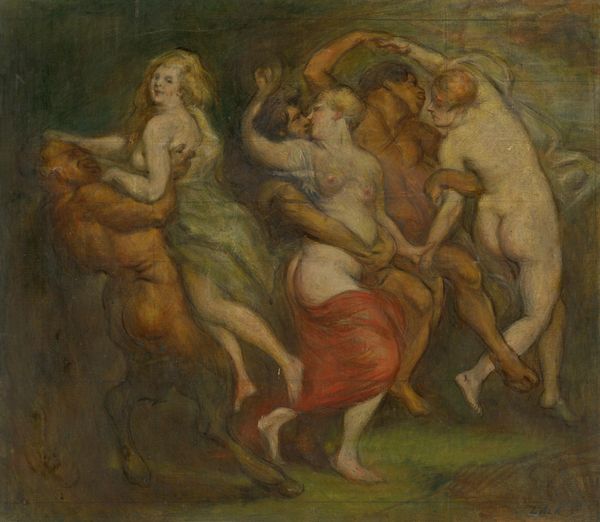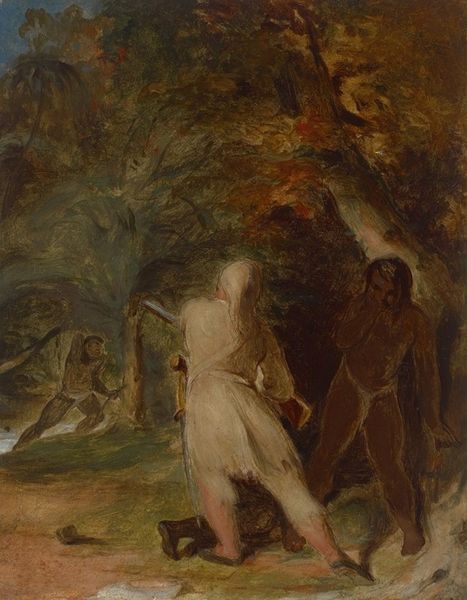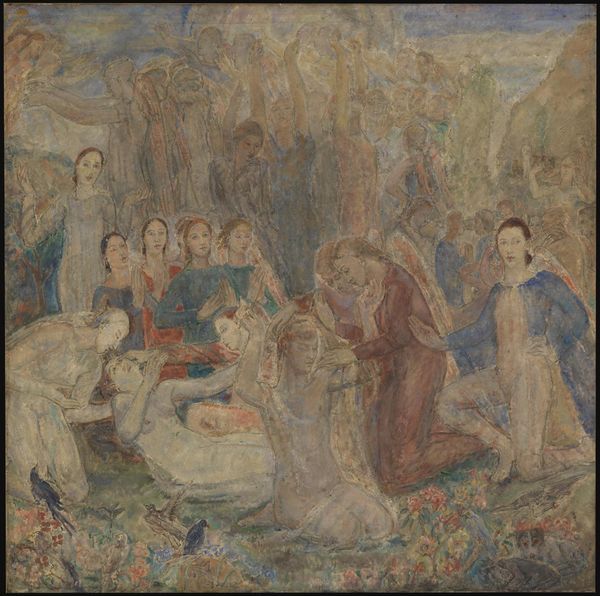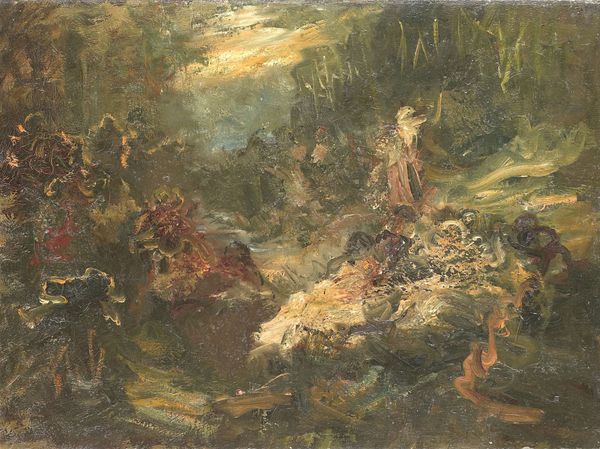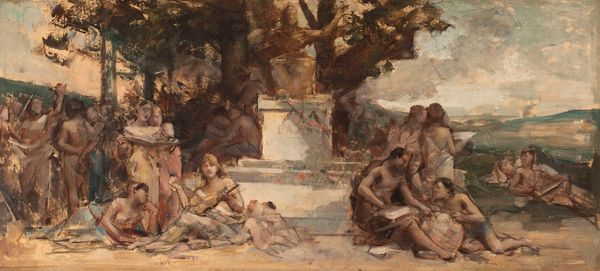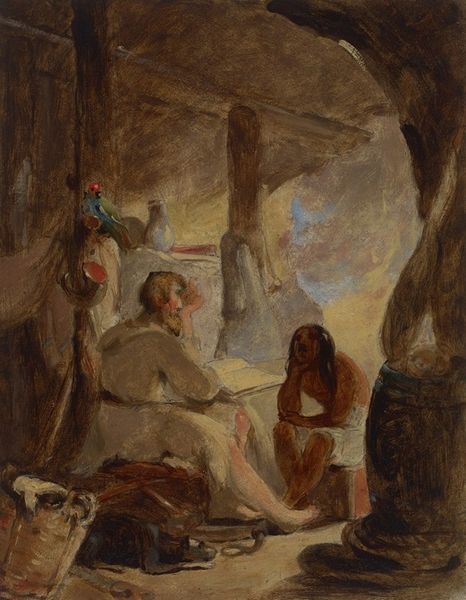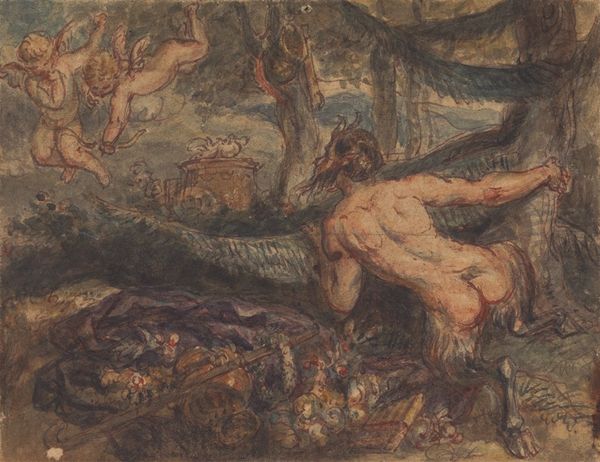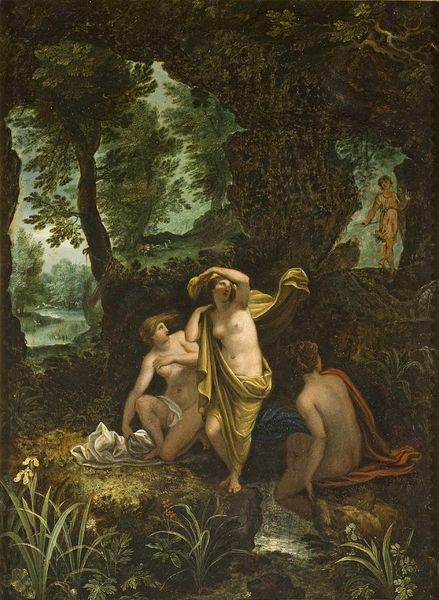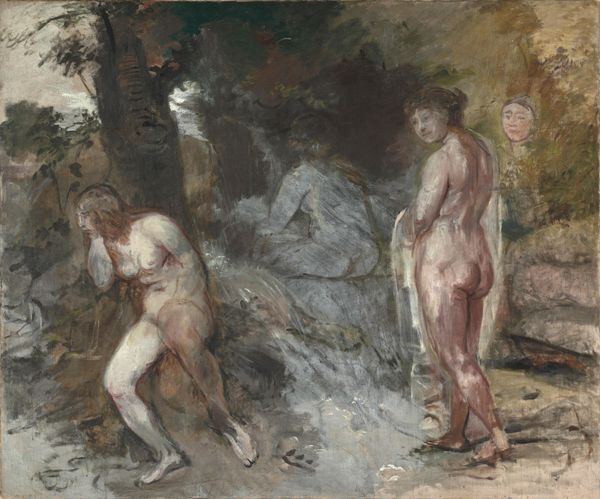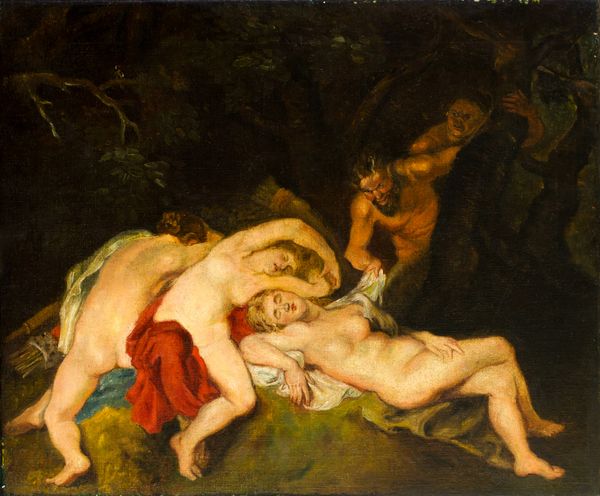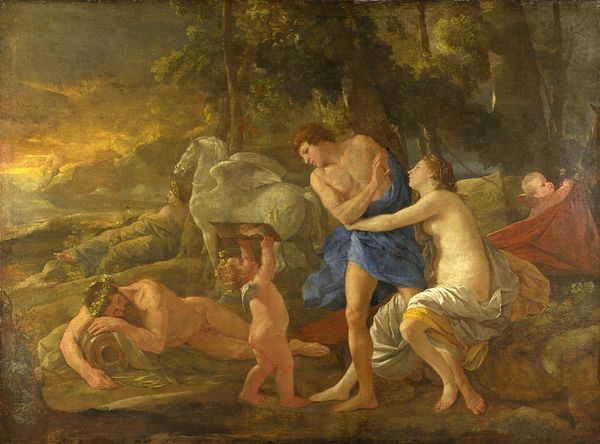
painting, watercolor
#
gouache
#
painting
#
figuration
#
oil painting
#
watercolor
#
romanticism
#
mythology
#
history-painting
#
nude
#
watercolor
Copyright: Public Domain: Artvee
Curator: Upon first viewing Robert Smirke's *Diana and Actaeon*, the composition immediately strikes me as unsettling—figures crammed into a space that feels far too small for them. The heavy, shadowed areas contrast oddly with the brighter figures. What is your immediate take on this? Editor: I agree. It feels theatrical, almost claustrophobic, with that heavy curtain pulled aside as if to reveal a secret, scandalous tableau. The contrast, as you say, amplifies the sense of drama and perhaps voyeurism inherent in the subject matter. Curator: This gouache and watercolor painting, executed in a Romantic style, delves into a classic myth: Actaeon's transgression of witnessing Diana and her nymphs bathing, resulting in his transformation and subsequent demise. Notice how Smirke handles the narrative. It isn’t simply about the action, but the psychological tension. Editor: Precisely. We see the unfolding moment, but also sense the looming consequences. The light on Diana and her attendants almost feels invasive, highlighting their vulnerability even as it displays a certain eroticism typical of Romantic interpretations of mythology. Curator: Consider Diana herself. Often portrayed as an untouchable goddess of the hunt, here she appears surprisingly exposed, her power seemingly diminished in this moment of surprise. This subversion of expectation is echoed by the shadowed presence of the observer on the periphery. Editor: Yes, Smirke uses these established symbols to further humanize figures typically viewed as powerful archetypes, almost making their predicament a political commentary on visibility and exposure, then and perhaps now. Actaeon becomes a symbol of the powerless punished for accidentally seeing behind the veil. Curator: I think you are right. These readings invite discourse about not only power, but who can transgress societal and divine law, and with what justification. Do you think it offers insights into gender roles as well? Editor: Most definitely. There's a tension between the male gaze and the female form that echoes debates around artistic license and objectification, especially when positioned against such foundational myths that are repeatedly retold and reframed, so often in art history dominated by men's points of view. Curator: It certainly leaves a lasting impression, pushing one to question one’s own viewing point, as if also implicated in this mythical transgression. Editor: An image filled with unresolved narrative tension that demands revisiting—visually and conceptually—long after one turns away.
Comments
No comments
Be the first to comment and join the conversation on the ultimate creative platform.
